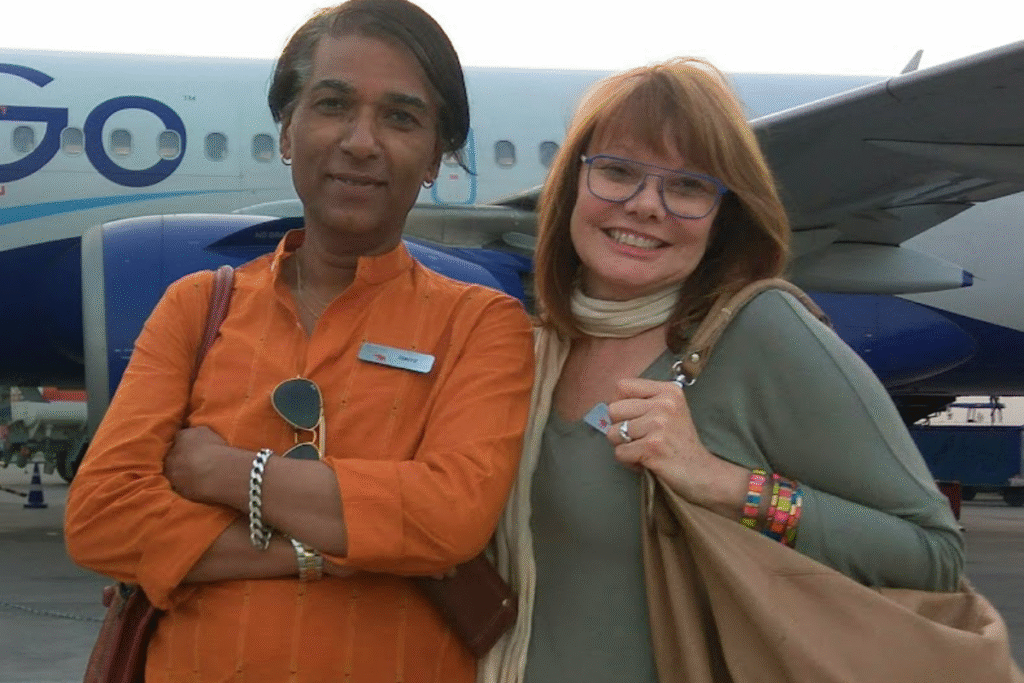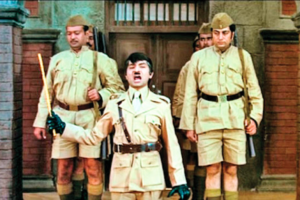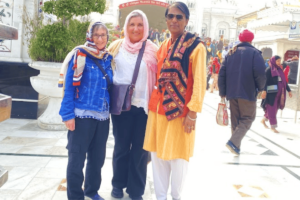This heartfelt story is about Harry, a soft-spoken and deeply empathetic Delhi tour guide whose journey began in a home led by discipline and sacrifice. Raised by a strict but visionary history teacher mother, Harry was immersed in the world of heritage, culture, and responsibility from childhood. Over the years, through silent chores and soulful storytelling, Harry transformed his life’s unique challenges into an emotionally rich path—guiding tourists from all over the world through Delhi’s historical monuments, Mughal streets, and cultural landmarks. This is not just a tour—it’s a life lived with grace, and a journey shared with every guest who chooses to walk through Delhi with Harry.

Delhi Tour Guide: My Real Story
A Childhood Shaped by History and Responsibility
My name is Harry, and today I am proud to call myself a Delhi tour guide, someone trusted by travelers from all over the world—especially women and solo adventurers who feel safe, respected, and emotionally connected in my company.
But my path to this life wasn’t easy—it was shaped by discipline, silence, and an unusual bond with my late mother.
She was a history and political science teacher, a woman who lived for books, structure, and values. Our home in Delhi was more a classroom than a playground. There were no cartoons, no games, no lazy afternoons. Instead, I was quizzed about the Mughal dynasty, world wars, and ancient India. If there was a holiday, it meant we were visiting a museum, a fort, or a place where history whispered through broken stones.
After school, I had to change into my mother’s old dresses, do homework, prepare dinner, clean the house, iron uniforms, and set the breakfast table for the next morning. Sometimes, I was sent out to fetch groceries in those same colorful old tops she handed me as aprons.
Learn more about Delhi’s UNESCO World Heritage Sites
Finding Comfort in Feminine Grace
During our school summer vacations, our family trips were never about leisure. If we went to cities like Agra to see the Taj Mahal, or to Jaipur, the Pink City, or the ghats of Varanasi, or even the serene lakes of Udaipur—my mother expected me to write a detailed 5000-word essay afterward. Each piece was reviewed by my aunty, who was also a language teacher. She would fill the paper with red ink—circles, corrections, remarks—and then ask me to write it again. So I learned early on to listen to every tour guide carefully, observe everything from trees to the texture of walls, and write about people and emotions too.
One of my most unforgettable vacations was a two-month stay with my maternal uncle in Shimla, the summer capital of British India. But fate had its own plan—my suitcase got misplaced at the train station. My mother, blaming me entirely, didn’t buy me a single new item. Instead, I had to wear my sister’s clothes—tops, skirts, and even her undergarments. Those two months, living entirely in girls’ clothes, changed something inside me. I began to feel like a girl—not because of the clothes alone, but because of the connection, the comfort, the joy I felt sharing everything with my sister. We roamed the hills of Shimla, played games, and shared secrets under the stars. That summer, I didn’t just visit Shimla—I discovered a part of myself I never knew existed.
In those quiet, lonely moments of sweeping the floors or cooking daal, I began to adopt the rhythms of a woman’s world—unspoken, nurturing, resilient. I found myself sitting with girls at school, sharing their secrets, snacks, and their love for Bollywood. They would describe films in detail—just by hearing their words, I learned how stories worked. That’s when I unknowingly began preparing for what I do today: storytelling as a guide.
When my mother passed away, I was left with the weight of her absence and the responsibility of our home. One day, while cleaning her cupboard, I found her bangles, perfume, and folded sarees. I held them and wept. Then, gently, I wore one of her kurtis. Looking in the mirror, I didn’t see shame—I saw a connection, a continuity.
When my father saw me dressed that way, I expected him to be angry. Instead, I broke down and said, “If I do all her work, why can’t I be her?”
And in that moment, he said nothing. He just nodded.
That silent blessing gave me the courage to live honestly, to be soft in a world that wanted me hard. To be graceful when the world expected grit.
The Start of My Journey as a Delhi Tour Guide
Then one day, I saw a newspaper ad for a girl guide for Delhi tours. My father took me to the interview. They asked me about Delhi’s monuments—Red Fort, Humayun’s Tomb, Qutub Minar, Lodhi Garden—and I answered with the voice of my mother inside me. They didn’t just offer me the job—they gave me a scooter, an ID card, and a path.
That’s how I became a full-time Delhi tour guide.
Looking for the best Delhi tour companion? Read more about why travelers choose me.
Guiding with Heart and Heritage
Today, I guide people not just through roads and ruins, but through stories. I show them the grandeur of the Mughals, the serenity of Sufi shrines, the liveliness of spice markets, and the resilience of Delhi’s soul. I walk them through UNESCO World Heritage sites and narrate history with the warmth of lived experience. I make them feel not just informed—but at home.
Women travelers often say, “There’s something different about you, Harry.” Maybe it’s the way I welcome them, or how I listen. But the truth is—it’s because I was raised by a woman who made me gentle, responsible, and emotionally aware.
Delhi isn’t just a city to me. It’s a story I’ve lived, loved, and now share.
An Invitation to Walk With Me
So if you’re looking for a Delhi tour guide who sees beyond the bricks, who welcomes you like family, and who tells Delhi’s tales with empathy and soul—I’m here.
Let’s walk together through a city of history, through streets of memory—and find a little bit of your story in mine.







